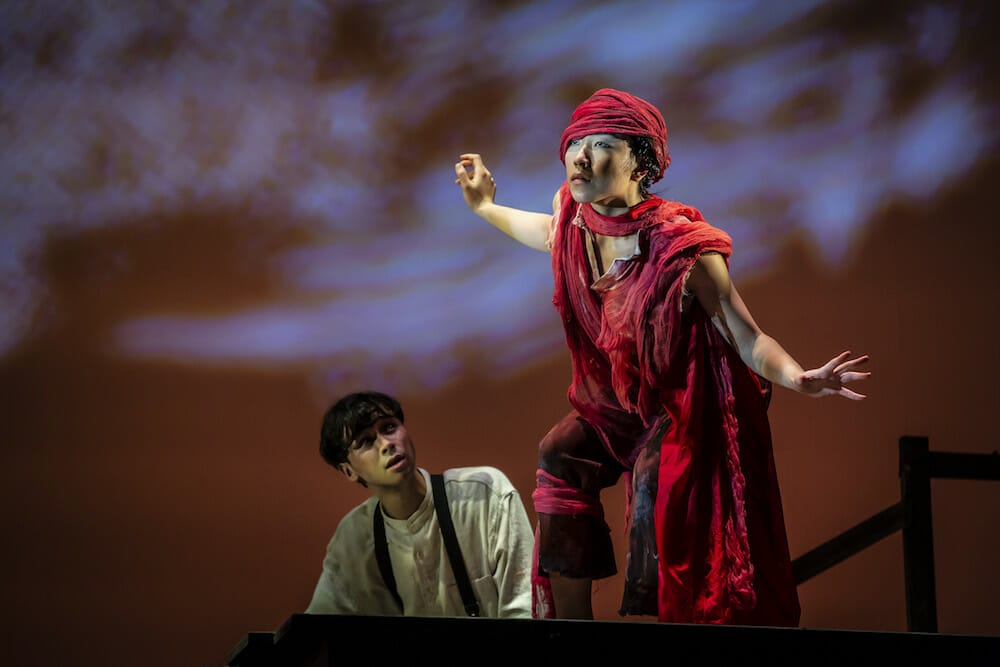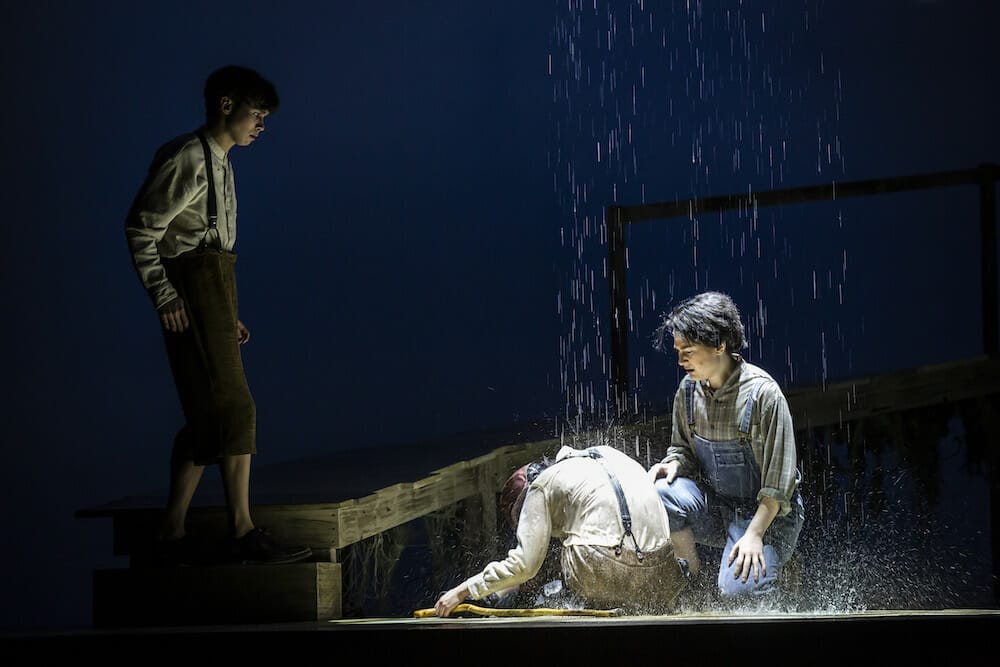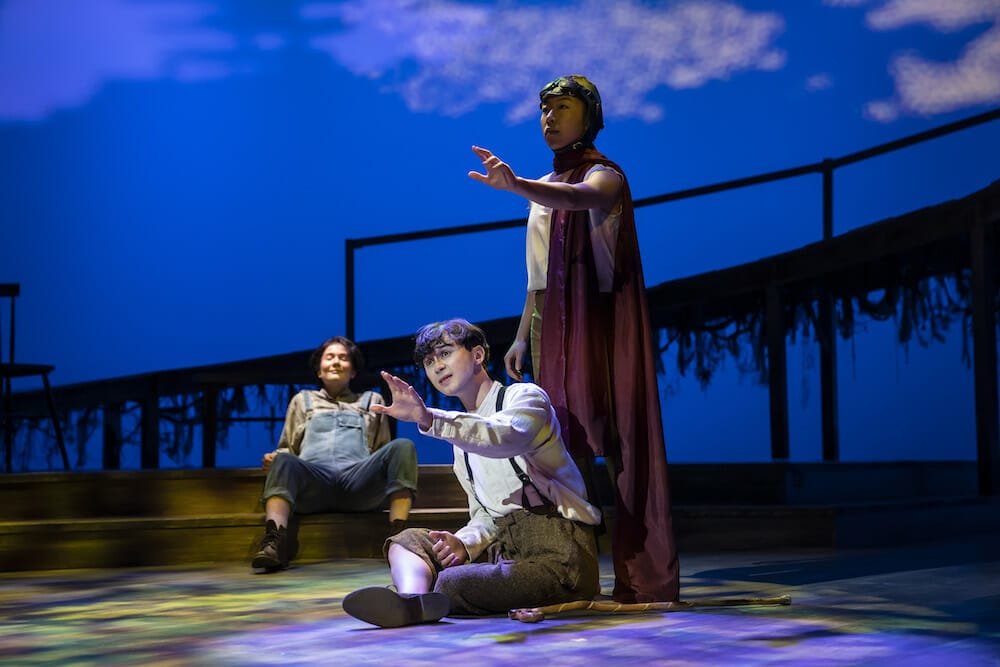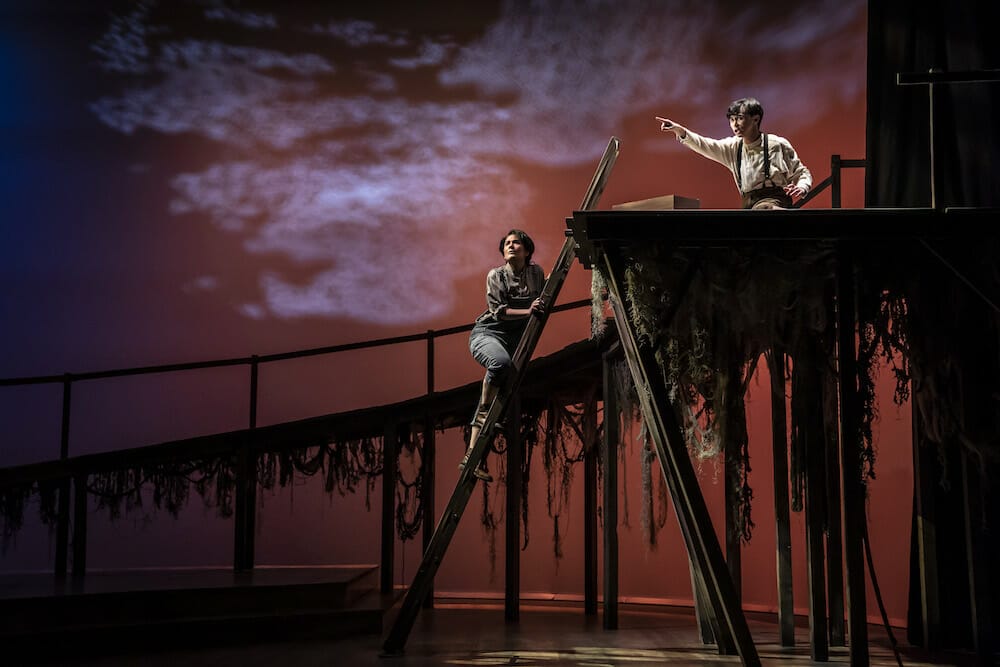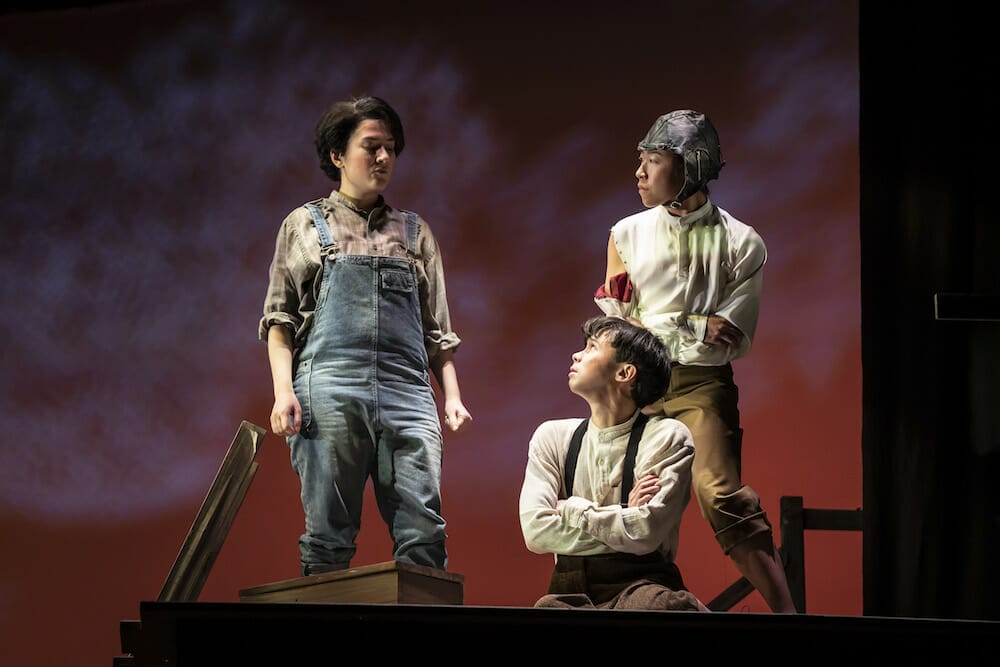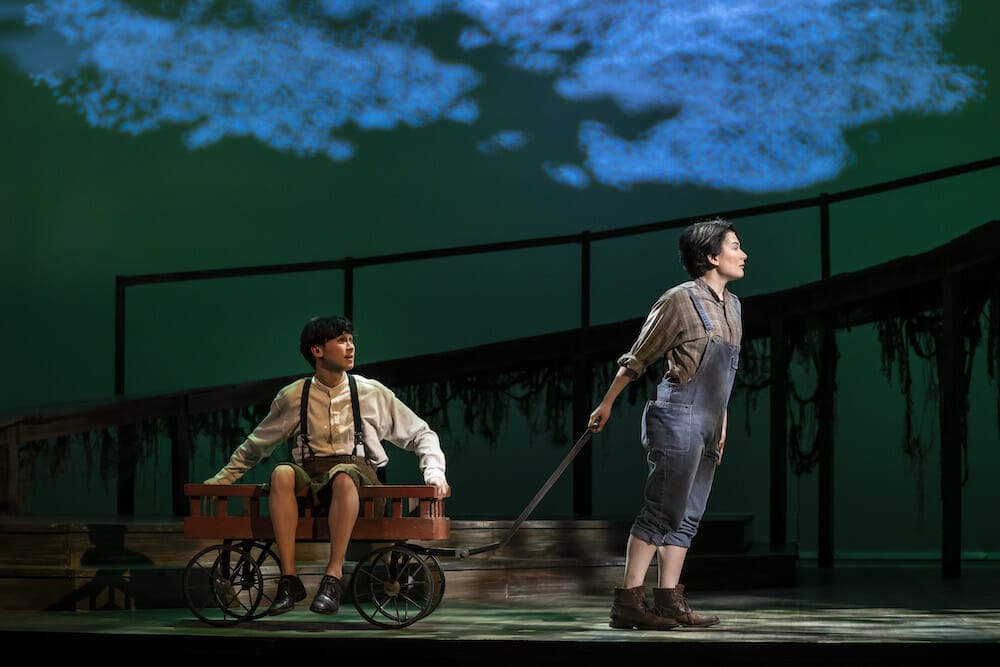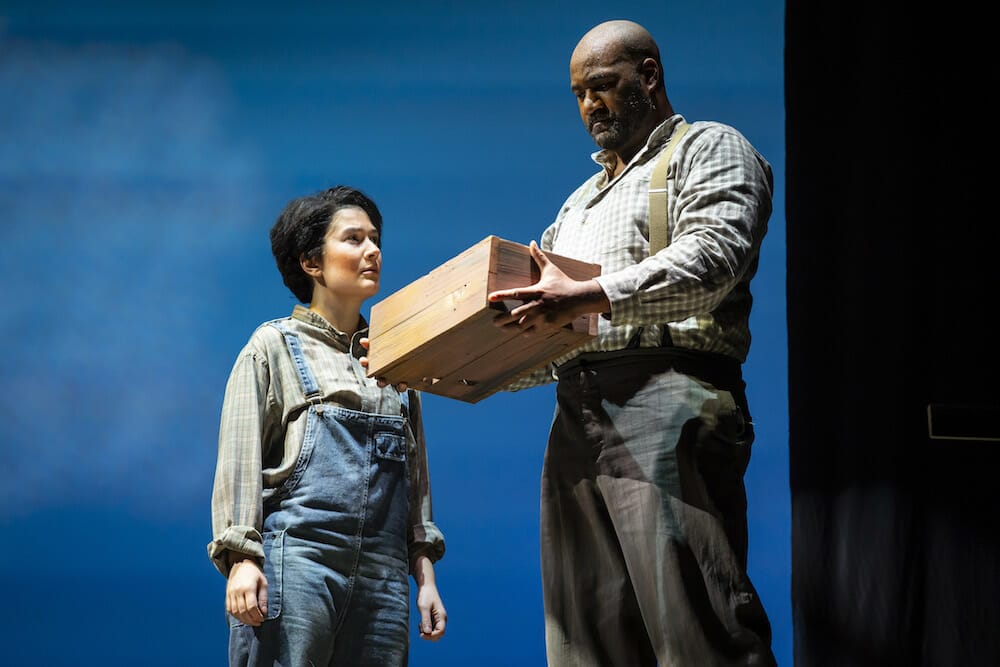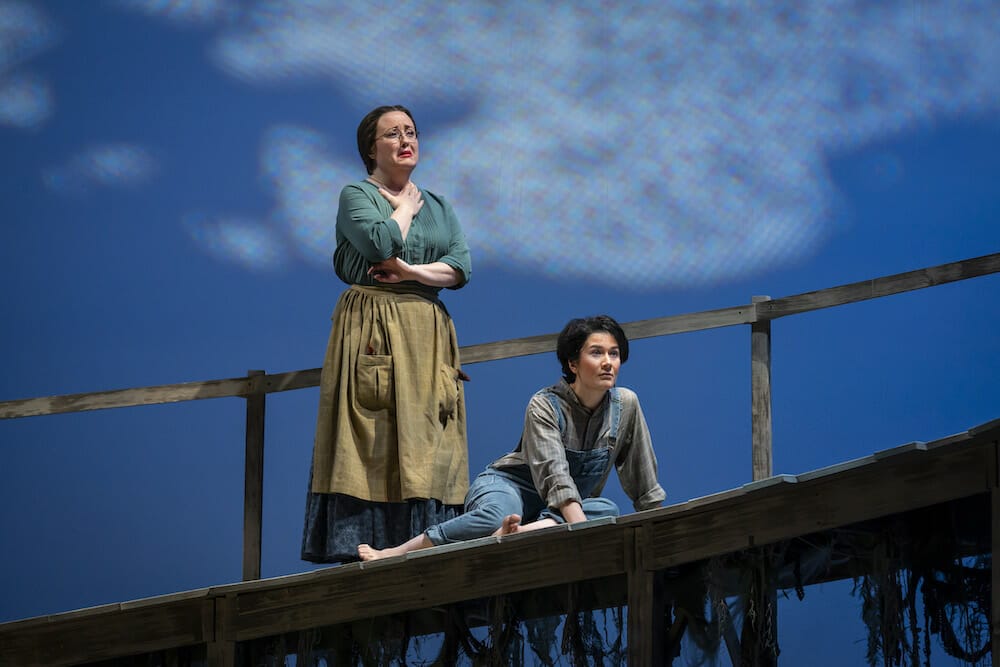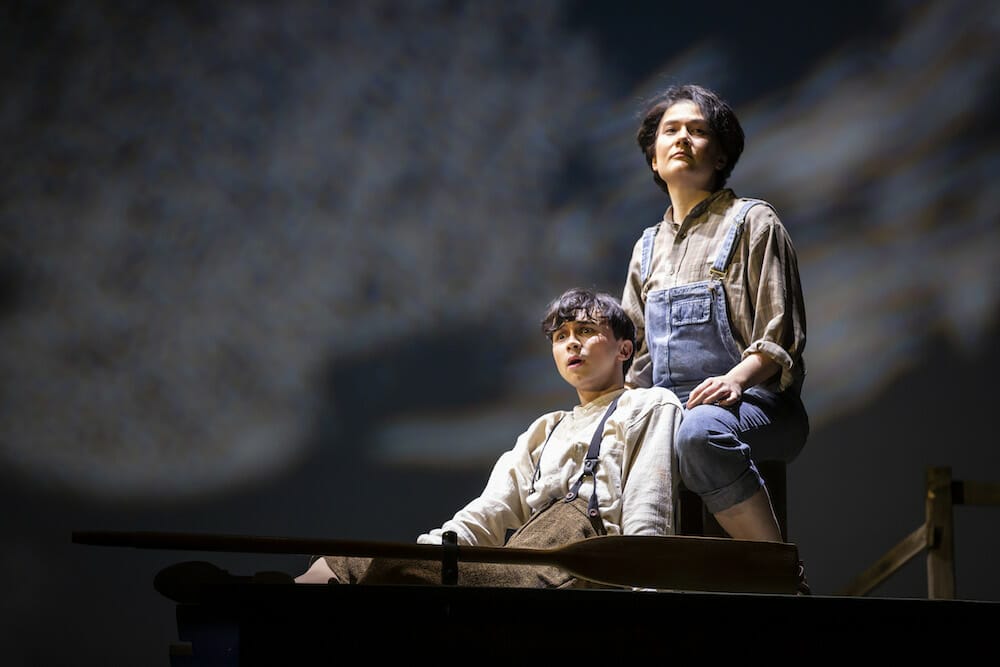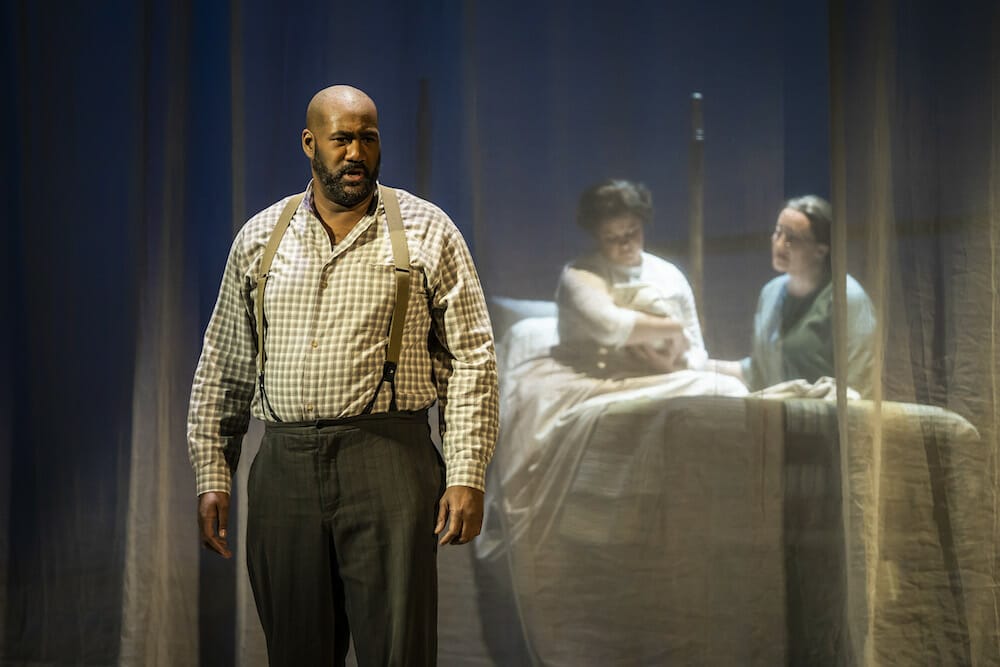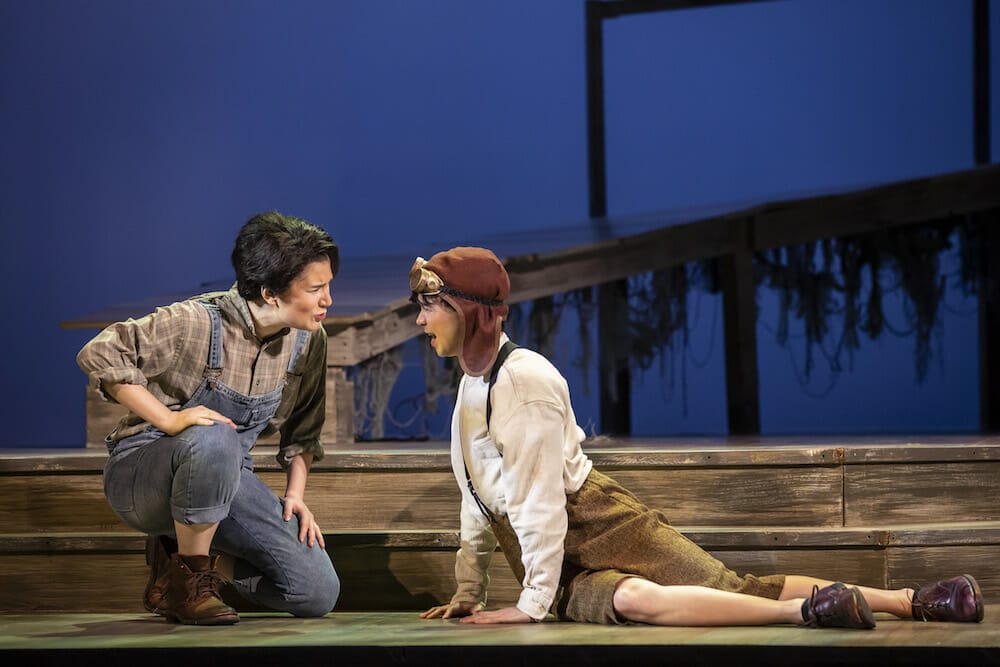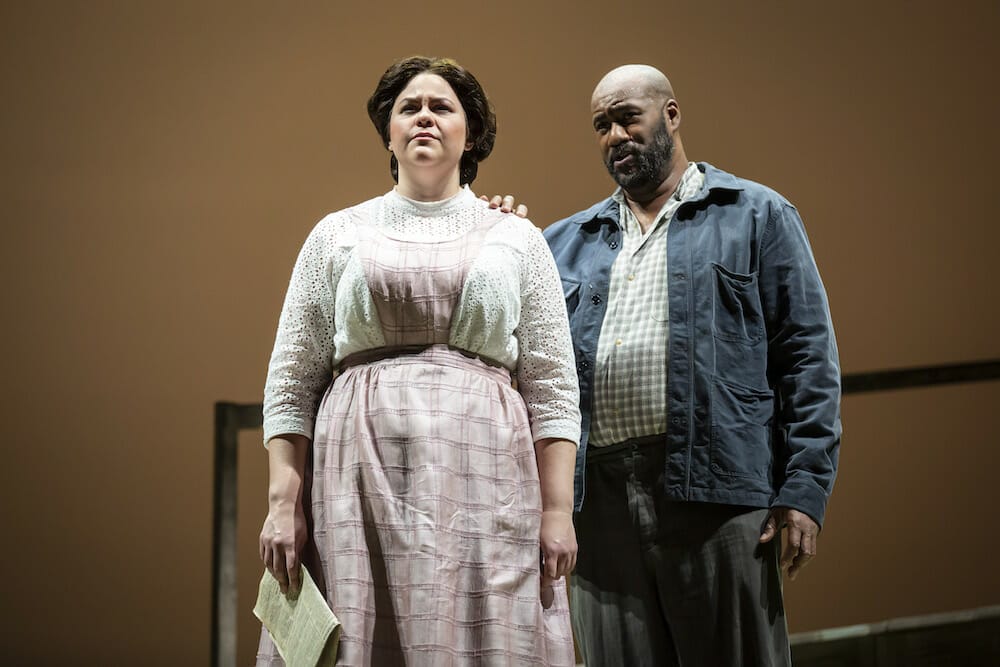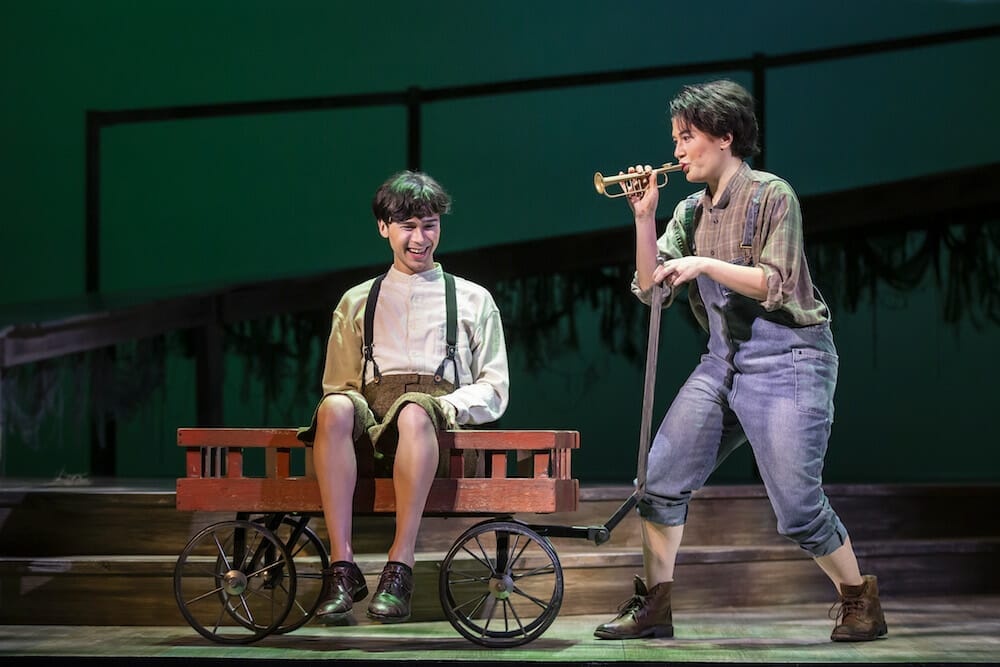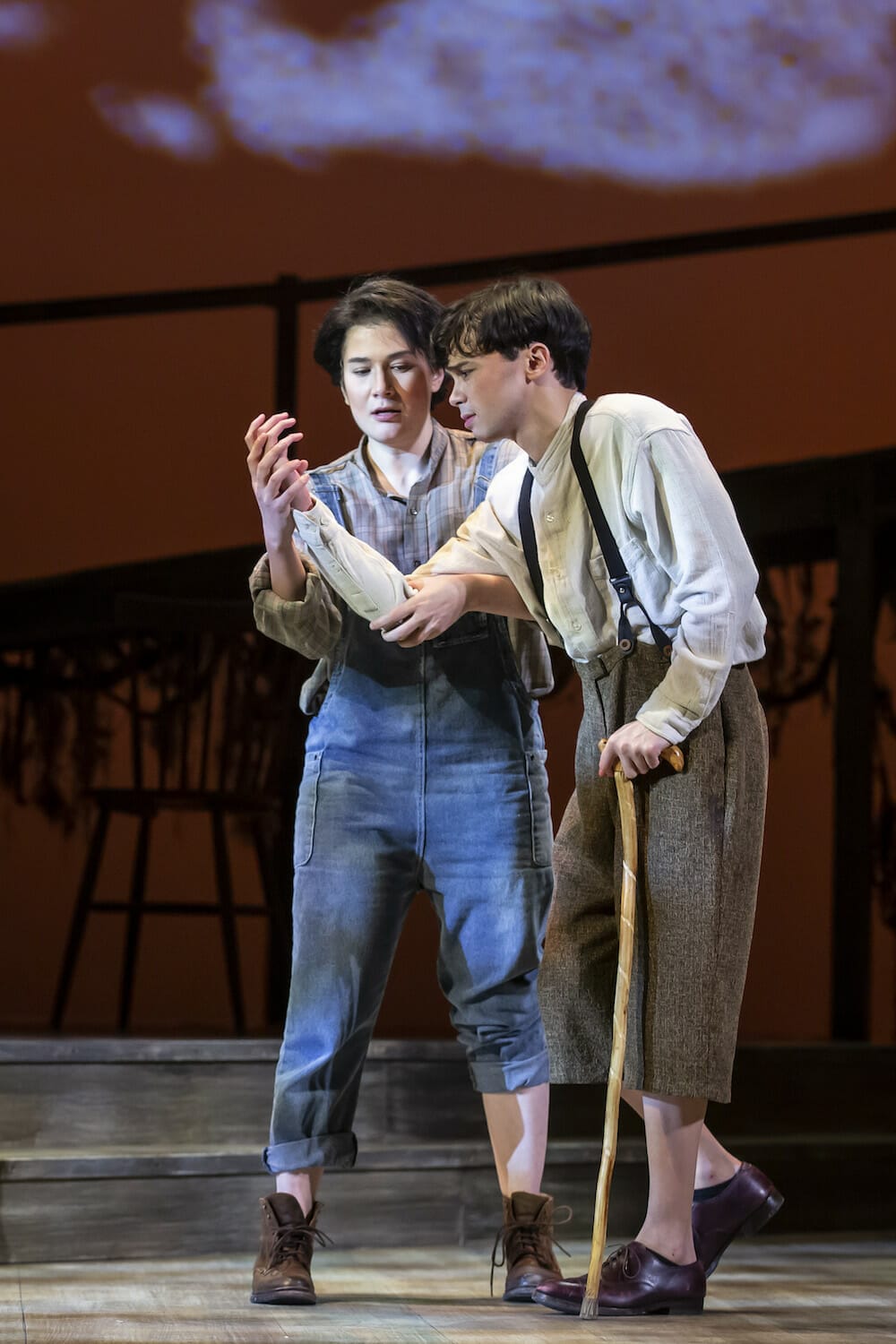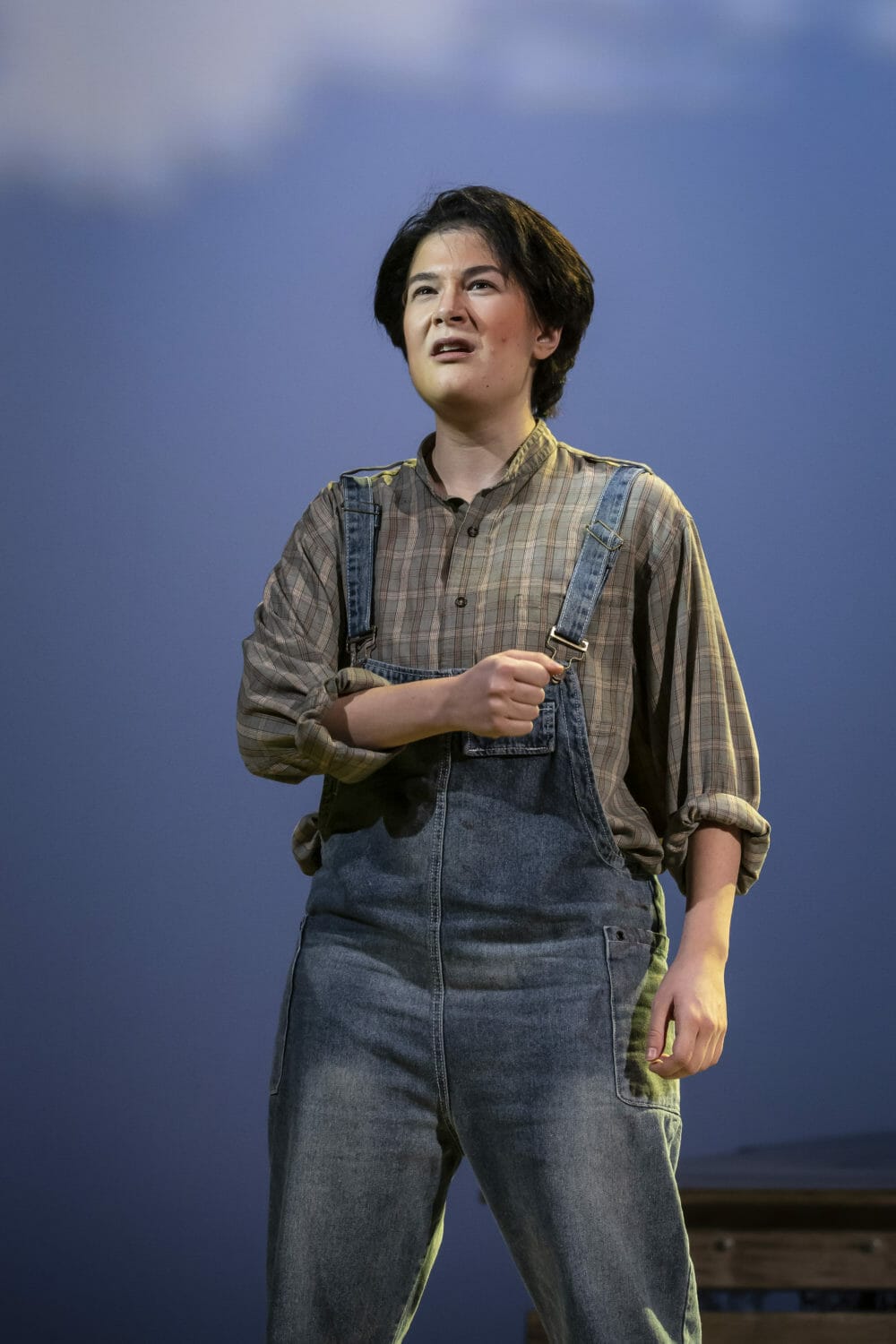Draped in red cloths, with every joint of her body rippling in articulations and a head seeming to grasp for air currents, Jenny Ngo is the title’s frail wounded bird. We meet her towards the opera’s conclusion, where her beauty and the sadness of her death is summed up by a preternaturally sensitive young boy with countertenor voice— similarly fragile— saying “..life is so big but the world is so small.”
THE SCARLET IBIS is mainly about two brothers— the older one having a somewhat stereotypic mix of bully patina and selfishness that hides his love broiling core, even from himself. We know these boys. They remind us of those long car rides when we dared our sibling to cross the imaginary line in the back of the car, and what fighting childhood boredom feels like.
For those of us who have logged many days in tarheel land,we know the terrain too, albeit set in a bygone era when the Wright Brothers were making the state “first in flight”.
If you have ever loved someone with a life-changing disability, or sibling of a similar someone, you will likely need a tear-blotting tissue nearby as you hear the captivating songs of THE SCARLET IBIS (Music: Stefan Weisman; Libretto: David Cote). The waxing percussion will convey to you the excitement of the disabled child’s mother when she reads of a physician and long shot cure the family can’t afford. Sad strings had announced the arrival of the deformed baby and herald the titular out of place bird’s death. From torment,to the ecstasy of the assumed cripple taking his first steps, the musical motifs usher you quickly and masterfully to the right emotional spot. How is it, we wonder, no musical composition before has so captured the difficulties of childbirth, or almost comically enlisted a bassoon to showcase the relative lack of imagination in the “normal” sibling, compared to his differently abled brother. We feel the sunrise just as vividly as when Copland perked us to spring’s stirrings. We feel the storm brewing just as we did when Ravel took to roiling waters. We feel the melody-rich music—always—alerting us to the emotional states within our characters or as harbingers of soon-to-come.
It could be that the accessibility of the characters being drawn in this opera based on a short story by James Hurst is what makes it so compelling and satisfying. Yet, this writer suspects that the thoughtful attentions to every aspect of this production by the creative team, in addition to the vocal talents on the stage, went a long way to driving the story into our core. In this writer’s view these were stellar vocal performances—all- with startling moments too, such as when contralto Sharmay Musacchio seems to summon baritone notes from below her toes.
It was one thing to hear Stage Director Elizabeth Margolius explain in a Newberry Library THE SCARLET IBIS Preview event that she favors physical theater and another to see what she means. Jordan Rutter, as Doodle, not only gets to sing many of the opera’s most transporting arias but also to stays in crippled stance or be in mirror pose with his spirit dancer Ginny Ngo. Annie Rosen as Brother from the very opening scene is the hyperkinetic boy of her role.
Just as much a star of this physical theater type interpretation, however, is the ramp adorned with hanging swampland type vines that allows the characters to better tell the story with their bodies (Set Design: Jack Magaw). It is on this ramp that we see the studied slow motion plodding walk of the father (Bill McMurray) to build a coffin for his newborn deformed son, that speaks to the moment’s sorrow as powerfully as his stop-you-in-your-tracks voice. It is here also that we see the indignity of death for The Scarlet Ibis as she is prodded with stick to her grave.
This writer also was duly impressed by the ever changing hues and skies created by Lighting Designer Charlie Cooper. These touches seemed to always operate on a stereo level—at once creating both literal settings for the narrative story, and at the same time functioning as a billboard for the score’s rich colors.
Chicago Opera Theater Is Transforming Chicago to An Exciting Opera Incubator
In a preview event for THE SCARLET IBIS we learned that this 95 minute no intermission opera is somewhat typical of today’s works that favor short stories instead of tomes like War and Peace. From the audience perspective, it also helps that the work is sized easy to digest. How lucky Chicago is to have Chicago Opera Theater and its commitment to midwife new or almost new operas to life. That said, this writer, schedule permitting, will delight in seeing a second production no matter where.
HIGHLY RECOMMENDED
CAST: Annie Rosen as Brother; Jordan Rutter as Doodle; Quinn Middleman as Mother, Sharmay Musacchio as Aunt Nicey, Bill McMurray as Father and dancer Ginny Ngo.
Creative Team for The Scarlet Ibis
Composer: Stefan Weisman
Librettist: David Cote
Conductor: David Hanlon
Stage Director: Elizabeth Margolius
Lighting Design: Charlie Cooper
Scenic Design: Jack Magaw
Costume Design: Brenda Winstead
PHOTOS: LIZ LAUREN
For more information on Chicago Opera Theater and their upcoming productions visit the Chicago Opera Theater website.
Also- read—
Chicago Opera Theater Presents THE LIFE AND DEATH(S) OF ALAN TURING Review—Opera History Sneak Peek
Chicago Opera Theater Presents THE SCARLET IBIS Preview – Enticing Panel Discussion
Check out more Picture this Post opera reviews in our ongoing story— Opera Performances and Opera Festivals PICTURE THIS POST Loves

About the Author: Amy Munice
Amy Munice is Editor-in-Chief and Co-Publisher of Picture This Post. She covers books, dance, film, theater, music, museums and travel. Prior to founding Picture This Post, Amy was a freelance writer and global PR specialist for decades—writing and ghostwriting thousands of articles and promotional communications on a wide range of technical and not-so-technical topics.
Amy hopes the magazine’s click-a-picture-to-read-a-vivid-account format will nourish those ever hunting for under-discovered cultural treasures. She especially loves writing articles about travel finds, showcasing works by cultural warriors of a progressive bent, and shining a light on bold, creative strokes by fledgling artists in all genres.

